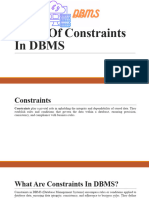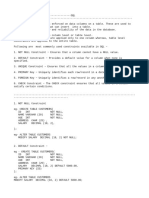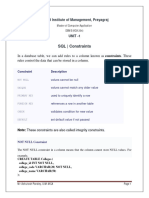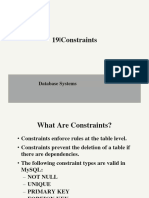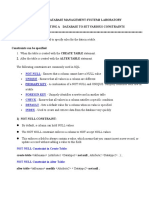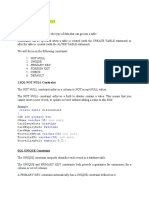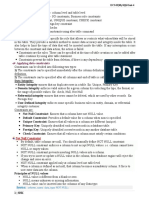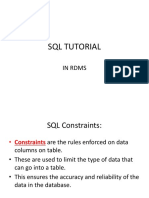0% found this document useful (0 votes)
16 views2 pagesConstraints in DBMS Colorful
Constraints in DBMS are rules applied to table columns to ensure data validity and consistency. Key types include NOT NULL, UNIQUE, PRIMARY KEY, FOREIGN KEY, CHECK, and DEFAULT, each serving specific purposes such as preventing nulls, ensuring uniqueness, linking tables, and setting default values. A summary table outlines these constraints and their descriptions.
Uploaded by
abhiraig1977Copyright
© © All Rights Reserved
We take content rights seriously. If you suspect this is your content, claim it here.
Available Formats
Download as PDF, TXT or read online on Scribd
0% found this document useful (0 votes)
16 views2 pagesConstraints in DBMS Colorful
Constraints in DBMS are rules applied to table columns to ensure data validity and consistency. Key types include NOT NULL, UNIQUE, PRIMARY KEY, FOREIGN KEY, CHECK, and DEFAULT, each serving specific purposes such as preventing nulls, ensuring uniqueness, linking tables, and setting default values. A summary table outlines these constraints and their descriptions.
Uploaded by
abhiraig1977Copyright
© © All Rights Reserved
We take content rights seriously. If you suspect this is your content, claim it here.
Available Formats
Download as PDF, TXT or read online on Scribd
/ 2



